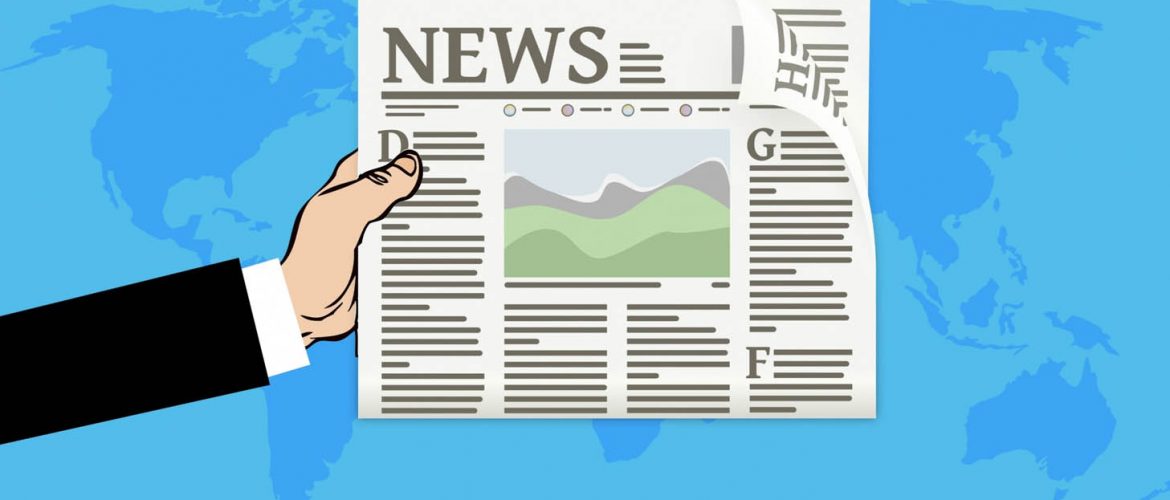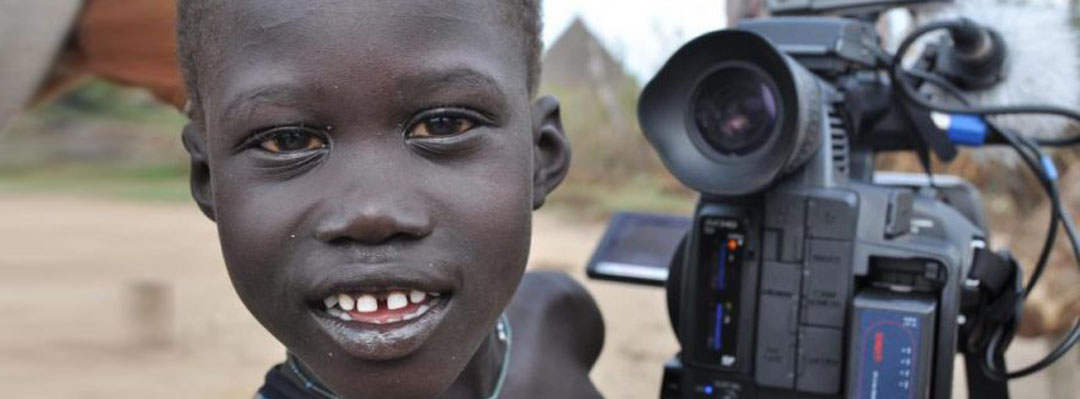Stolpersteine for Charlotte Salomon and Felix Nussbaum added to collection of Yad Vashem’s Museum of Holocaust Art
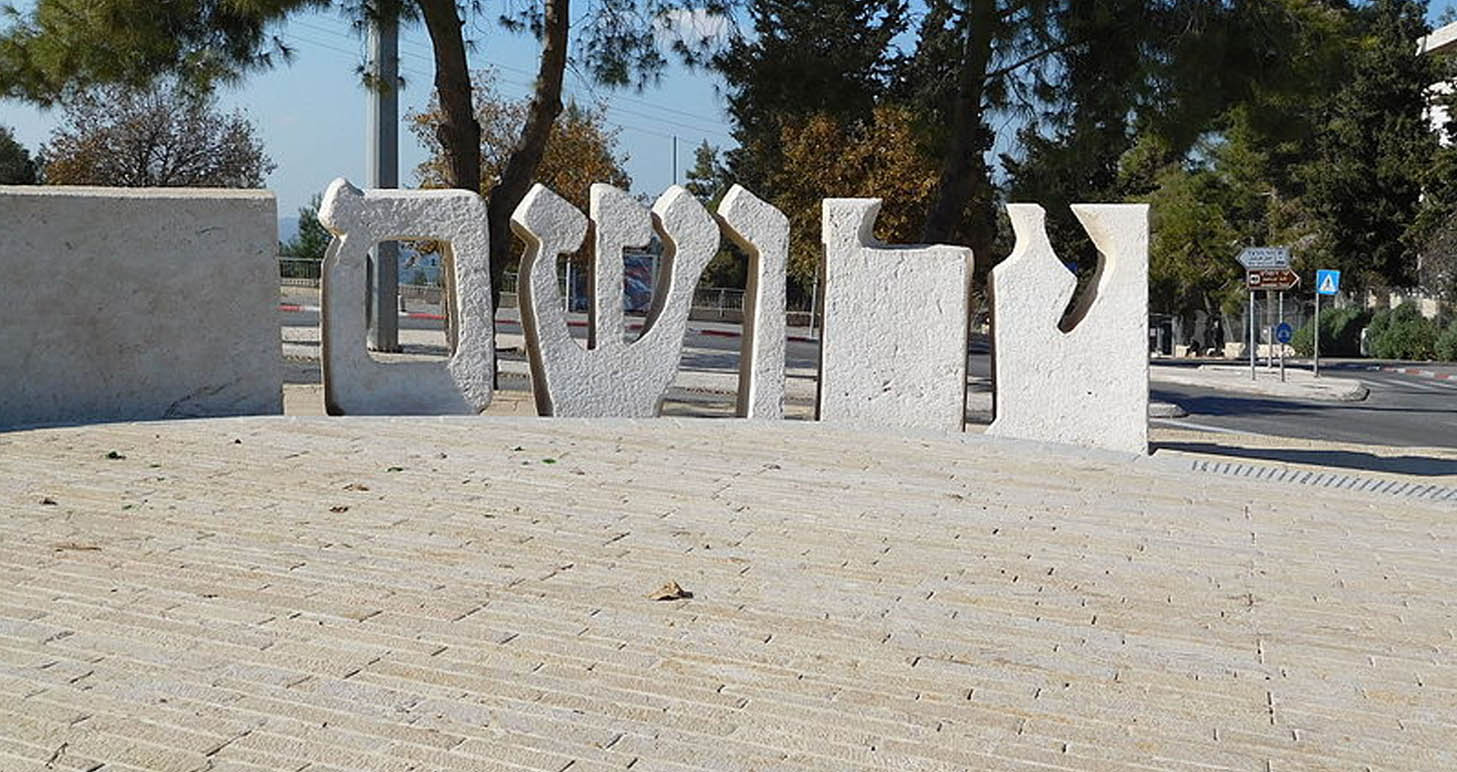
“Yad Vashem forms the utterly authoritative, heart-breaking, inspiring center of the world’s commemoration of the victims of the Holocaust. The works in Yad Vashem’s Museum of Holocaust Art uplift us with the power of creativity shown by artists facing persecution and death – and devastate us with their testimony of what was lost. These artists were among the six million Jews murdered by the Nazis.”
“Many of these murdered artists are among the 75,000 victims of the Nazis that have been commemorated through the placement of Stolpersteine by Gunter Demnig. I wish to express my deepest gratitude to the Museum of Holocaust Art for the inclusion of the Stolpersteine for Charlotte Salomon and Felix Nussbaum in their permanent collection.”
“I also wish to express my deepest gratitude to our dear friend Gunter Demnig, for having provided us with such evocative and powerful ways of commemorating our murdered family and friends. Recent developments have made frighteningly apparent the importance of the work of Gunter and his dedicated team.”
Terry Swartzberg, chairperson of the Initiative Stolpersteine für München e.V.
On Yad Vashem’s Museum of Holocaust Art
The Museum of Holocaust Art, inaugurated in 2005, is located in Jerusalem’s Yad Vashem – the World Holocaust Remembrance Center, on its Square of Hope. The Museum’s rotating permanent exhibition displays some 120 works of art. Most of these works were created during the Holocaust itself, or before the war by artists later murdered during the Shoah.
75,000 Stolpersteine in 1,600 cities in 26 countries – placed by 1,600 local organizations, each staffed by volunteers. It adds up to the largest, most inclusive and democratic project of commemoration that the world has ever seen.
Each Stolperstein (“stumbling block”) commemorates a victim of the Shoah – Jew, Sinti or Roma, homosexual, persons persecuted for religious or political views or due to supposed disability (“euthanasia”).
Each Stolperstein is placed in the sidewalk in front of the building in which the victim lived before being dragged off by the Nazis to be murdered.
Each is commissioned by persons who have dedicated themselves to commemorating their family members, friends, neighbors.
Each Stolperstein is manufactured by hand and installed in the sidewalk by Gunter Demnig, the Cologne-based artist who launched this movement in 1994.
The Stolpersteine thus constitute “the palpable atlas of Jewish life and suffering” – in the words of Galit Noga-Bonai, professor of religious art at Jerusalem’s Hebrew University.
On Felix Nussbaum
Felix was born on December 11, 1904, in the northern Germany city of Osnabrück. He rose to become one of the leading members of the Neue Sachlichkeit school of art. After anti-Semitic arsonists destroyed in 1932 much of his work, Felix fled Germany. His last four years were spent in hiding in Belgium. It was during this time – and under sheer unimaginable conditions of privation – that Felix produced many of his greatest works.
Felix and his wife – the gifted artist Felka Platek – were denounced to the Gestapo and sent to Auschwitz on August 2, 1944. They died shortly prior to the camp’s liberation.
Stolpersteine were placed for Felix and his parents in Osnabrück, and for Felix and Felka in Brussels.
On Charlotte Salomon
Charlotte was born on April 16, 1917 in Berlin. Regarded in the late 1930’s as being a young artist of high promise, she fled Nazi Germany in 1939 for France. After being seized and released by the Gestapo, Charlotte and her husband Alexander Nagler went into hiding in France.
It was during her time in exil and hiding that Charlotte – driven by the need to respond to the traumas of her childhood and the horrors she was experiencing – created one of the world’s most evocative bodies of art: “Leben? Oder Theater?” (“Life? Or Theater?”). Designed to be a “musical” divided into acts and scenes, this probing look at her life is comprised of 769 of the 1325 gouaches painted by Charlotte during a single 18-month period. These paintings are accompanied by elucidatory texts and references to the score.
On September 24, 1943, Charlotte and Alexander were denounced to the Gestapo. Five months pregnant, Charlotte was murdered in Auschwitz, at which she arrived on October 7, 1943.
The Stolperstein for Charlotte was placed in Berlin.
Happy birthday! Terry Swartzberg’s Kippa Experiment turns 7!
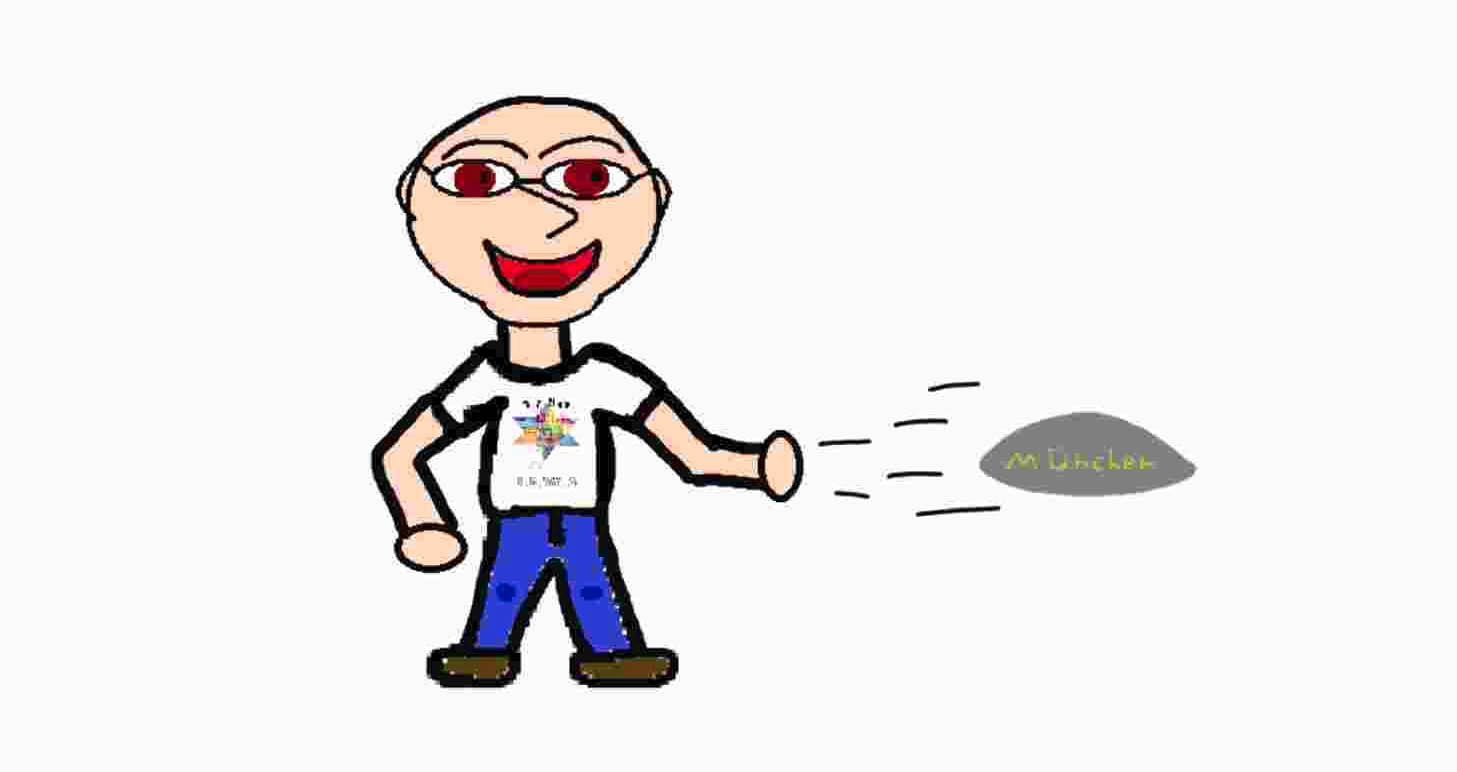
As of 9 a.m. on December 1, 2012:
2556 days
125 kippot
100 cities
10 countries.
Countlless amusing and warmhearted experiences.
Looking forward to the next 7 years!
The fun video (from Ludwig and Leo, 16 year-old interns)
Historic performance of “Black Tide” in Berlin: the moving video!
Save the world’s water – from the Black Tide of oil pollution. 100 million victims in 100 countries.
Save the world’s water – from the Black Tide of oil pollution. 100 million victims in 100 countries.
Save South Sudan and save all of Africa – from the oil’s poisoning of societies and the environment.
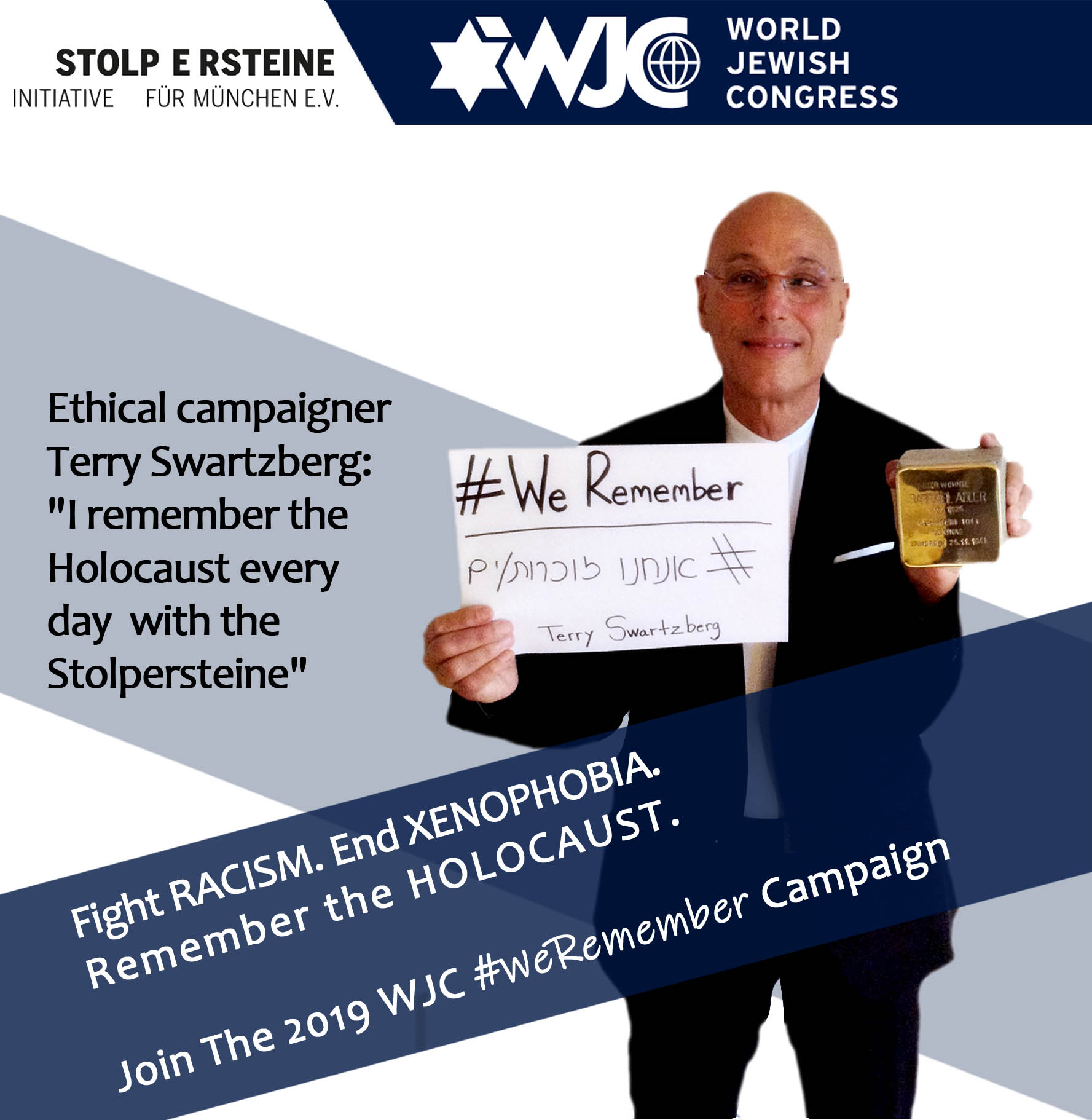
Terry Swartzberg, the Munich-based ethical campaigner, has been selected by the World Jewish Congress to take part in its #WeRemember campaign, which is set to be “the world’s largest Holocaust remembrance event“.
Via the social media, #WeRemember will present on January 27, 2019 – the 74th anniversary of the liberation of Auschwitz – photos of leading Jews, commemorative organizations and religious figures communicating two important messages:
We will never forget any of the victims of the Holocaust. Never. Ever. Not a single one.
We will fight Anti-Semitism, racism and discrimination. They caused the Holocaust – and are on the rise once more today.
In selecting Terry Swartzberg, the WJC cited his “kippa experiment”, in which Terry has been wearing a kippa – as a sign of his espousal of a joyous, unafraid Judaism – on the streets of Germany and Europe for the last six years. Also mentioned was Terry’s work for Gunter Demnig’s Stolpersteine movement, which is the world’s largest project of Holocaust commemoration.
The video on #WeRemember:
https://www.youtube.com/watch?
On the WJC:
Headed by president Ronald S. Lauder, the World Jewish Congress is the international organization that represents Jewish communities and organizations in 100 countries around the world. It advocates on their behalf towards governments, parliaments, international organizations and other faiths.
www.worldjewishcongress.org
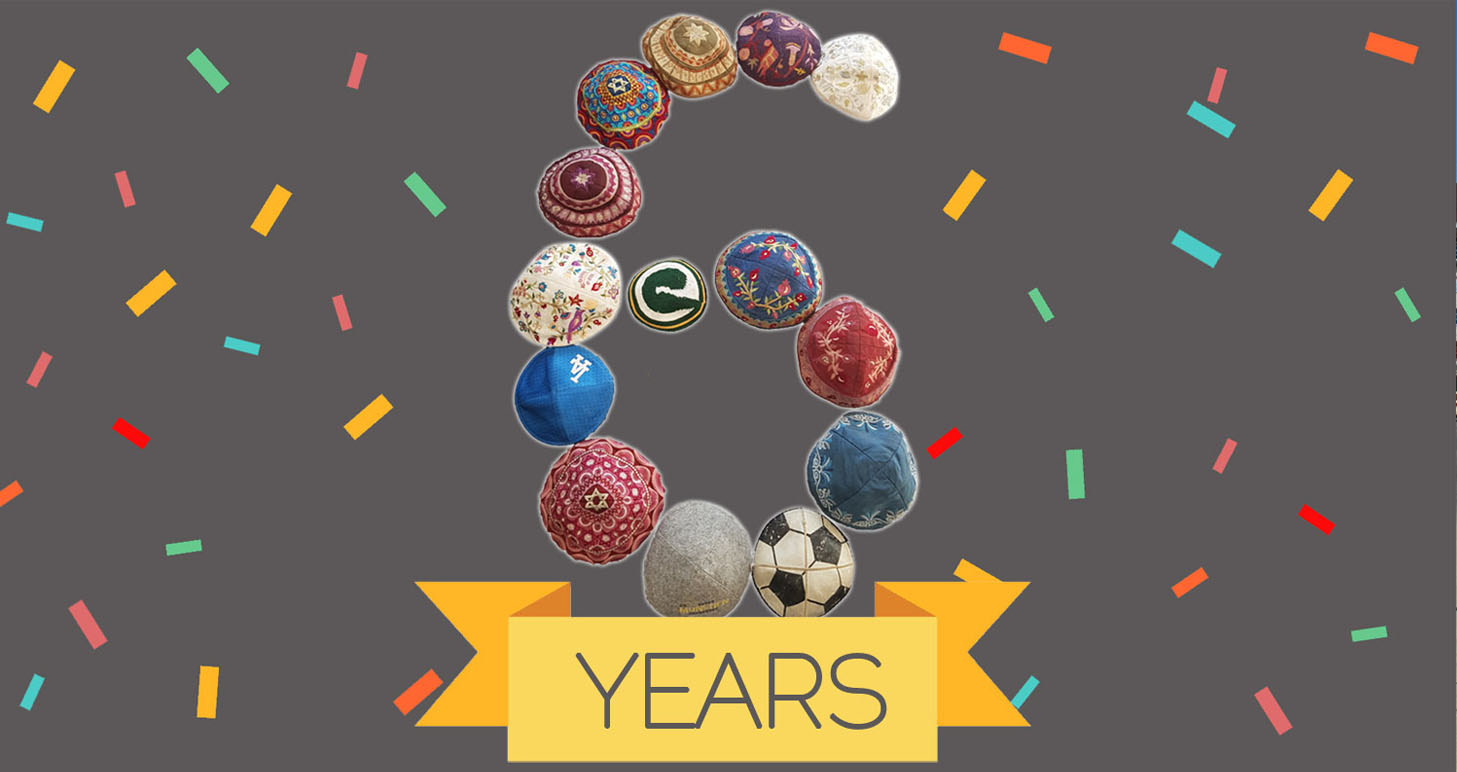
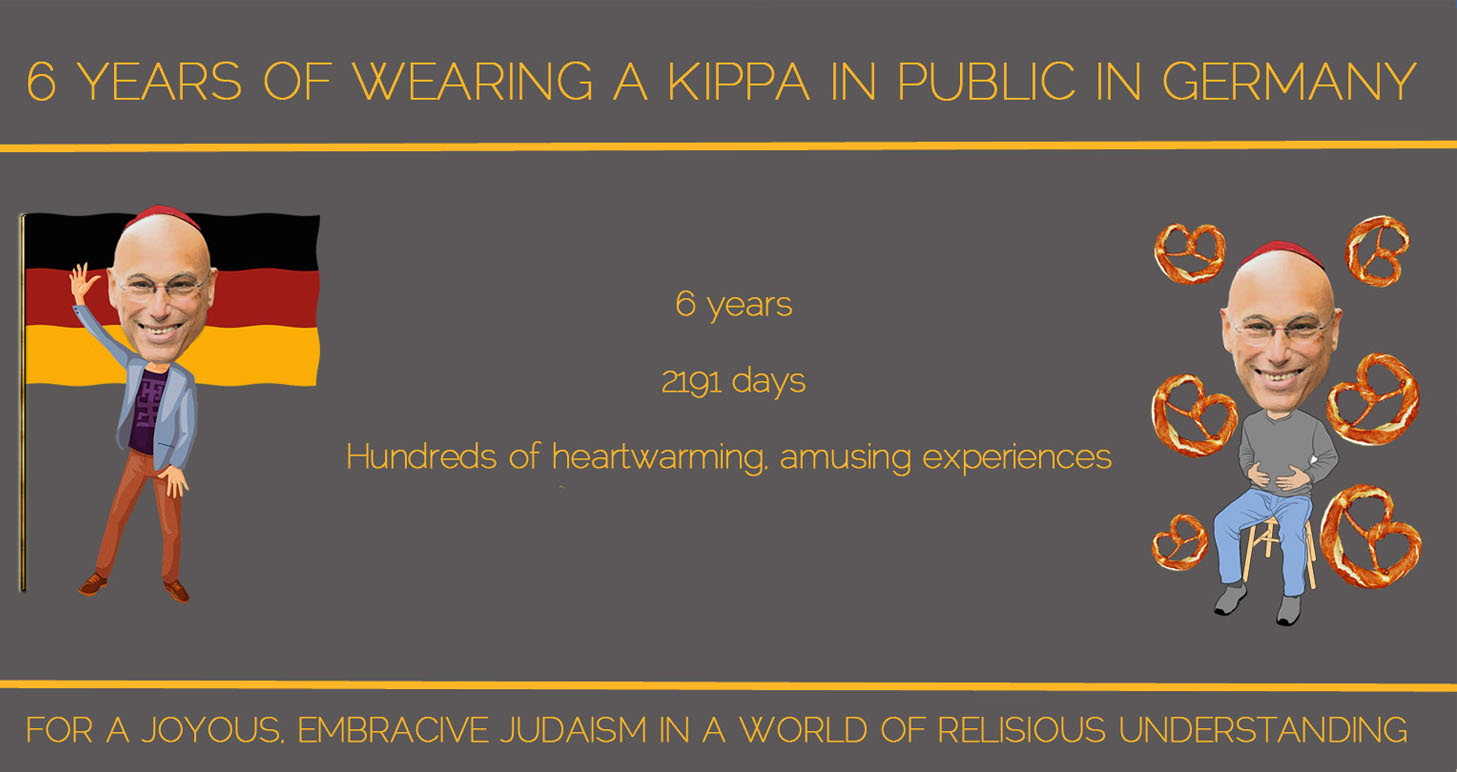
Terry Swartzberg‘s “Kippa Experiment”
Six years of being joyously Jewish on the streets of Germany
December 1, 2018
I am celebrating today an important anniversary.
Six years of wearing a kippa wherever life took me in Germany and in Europe in general.
On December 1, 2012, I donned a kippa and went out to prove to myself and my fellow Jews that we are safe in Germany, and that anti-Semites are not waiting to harass or manhandle us the moment that they realize that a Jew in their midst.
My scorecard:
2191 days of wearing a kippa
88 kippot worn
237 cities, towns and villages visited in 12 countries
0 negative incidents
Lots of fun and moving experiences
Dozens of TV reports, of videos and articles in major newspapers
1 major honor – by the government of Germany – for my “civic courage”
1 book written about it: http://chutzpahandkippah.com/
YouTube: https://www.youtube.com/watch?v=ECQUcTjYF4g&t=57s
Next up for the “kippa experiment”: I am heading for secondary and vocational schools, to find out what their students – many of whom immigrants and many Muslim – think and feel about Judaism and the Holocaust.
Key reports and articles on the “Kippa Experiment”
https://swartzberg.com/swartzberg-in-the-media
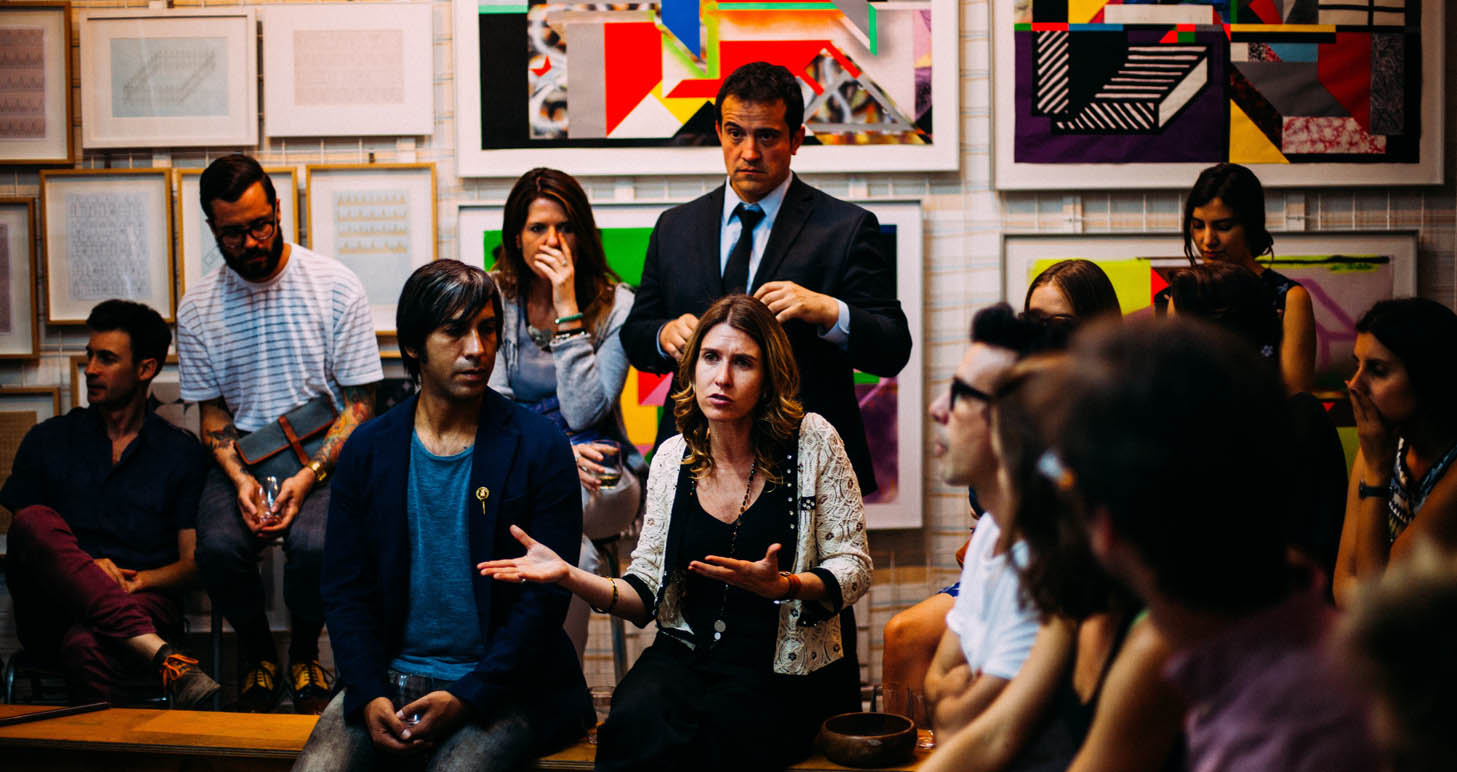
Fulfilling a great and growing need:
Workshops on campaigning from Swartzberg
October 21, 2018
“Never has the world experienced so many civilization-threatening, mutually-reinforcing crises,” states Terry Swartzberg. He adds: “Thus never has the world so needed campaigns effectively dealing with these crises.”
It is a need that Terry Swartzberg has been fulfilling over the past decades. Among his headlining campaigns:
To protect the climate – for the United Nations
To commemorate the victims of the Holocaust – as spokesperson for the Stolpersteine, which form the largest, most inclusive, most democratic project of commemoration that the world has ever seen
To get clean water for millions of South Sudanese, whose land is being ravaged by a black tide of oil contamination
For a joyous, unafraid Judaism in Germany – via Terry’s kippa project
For understanding and mutual respect among religions
“In a very gratifying development, never have there been more NGOs and activists conducting
campaigns to take on the world’s ills,” adds Terry.
To ensure that these campaigns achieve their objective, Swartzberg GmbH – Terry’s company – is now offering workshops and coaching on campaigns.
Campaigning workshops and coaching
Learn campaigning from Terry Swartzberg:
Four intensive hours
During which your organization uses the Swartzberg Campaigning Check-List to audit and identify its assets, delineate its network, clarify its objectives and enabling messages, and implement these in a trial roll-out.
Forty-eight intensive weekend hours
During which your organization and its campaign will be put to the ultimate test: our campaigning audit.
Scorecards of objectives/degrees of attainment, of assets/degree of use, current/potential network, current/potential visibility, comparison of campaign with benchmarks and much more. Weekend concludes with trial roll-out and complete exhaustion.
Coaching by Campaign Doctor Mr. T.
Join the UN, EU, German government and state of Bavaria in calling on Campaign Doctor Terry for eyes-on and hands-on coaching of your organization a regular basis – with in-depth monitoring and implementation reports, pushes of topics, events and people needing contacting and covering.
Other Swartzberg Workshops:
Reinvent yourself!
Workshop activating the skills needed to become the real you. From the master of invention and self-reinvention Terry Swartzberg, Ethical campaigner striving to save the world. Kippa-wearer single-handedly trying to show Jews that they are safe in Germany and Europe. Those are the two most recent identities that Terry Swartzberg, the master of reinvention, has created for himself during his unprecedentedly bold and visionary life. Work with Terry to discover your authentic identity, and to tap the courage required to realize it.
What will survive.
Stolpersteine and the next generations of commemoration
Never have the Holocaust and its six million Jewish victims been more present in the lives and minds of the people of the world than they are today. That‘s thanks to the Stolpersteine, the largest project of commemoration that the world has ever seen. Learn about the Stolpersteine and how they have created a new and intensively moving form of commemoration – one that is standing Germany and the rest of Europe in good stead in an era of increasing extremism – in this presentation from Terry Swartzberg, head of the Munich chapter and spokesperson for the Stolpersteine movement.
Compassion through commemoration
Workshop for the young
Today’s young persons are more aware of and interested in the Holocaust and its victims than any other in the post-war era. This is largely due to the Stolpersteine. Each of these “stumbling stones” commemorates a victim of the Holocaust. All told, there are 70,000 Stolpersteine in 1,600 cities in 24 countries. Europe’s young flock to be part of the Stolpersteine movement. They research the lives of the victims, help facilitate the stones’ placement, and polish them at least once a year. Through doing such, the young have become caring and compassionate members of society. This enthusiastic participation has yielded a set of “worthy practices”, which are applied in this workshop.

Major articles by Terry Swartzberg 2018
Interrogation of Lundin Execs for Crimes Against Humanity and Environment in South Sudan
Start of a new era of corporate accountability?
https://via.news/africa/lundin-crimes-against-humanity-environment-south-sudan/
South Sudan Government Confirms Widespread Oil-caused Environmental Catastrophe
https://via.news/africa/south-sudan-confirms-oil-environmental-catastrophe/
South Sudan Oil Contamination: “Among the Highest in the World,” Study Finds
https://via.news/africa/south-sudan-oil-contamination-highest-study-finds/
Briefing on Big Oil’s Contamination of South Sudan
https://via.news/africa/briefing-big-oil-contamination-south-sudan/
German NGO struggle for clean water in South Sudan
German NGO struggle for clean water in South Sudan
Oil-mudslides flooding South Sudan
Oil-mudslides flooding South Sudan
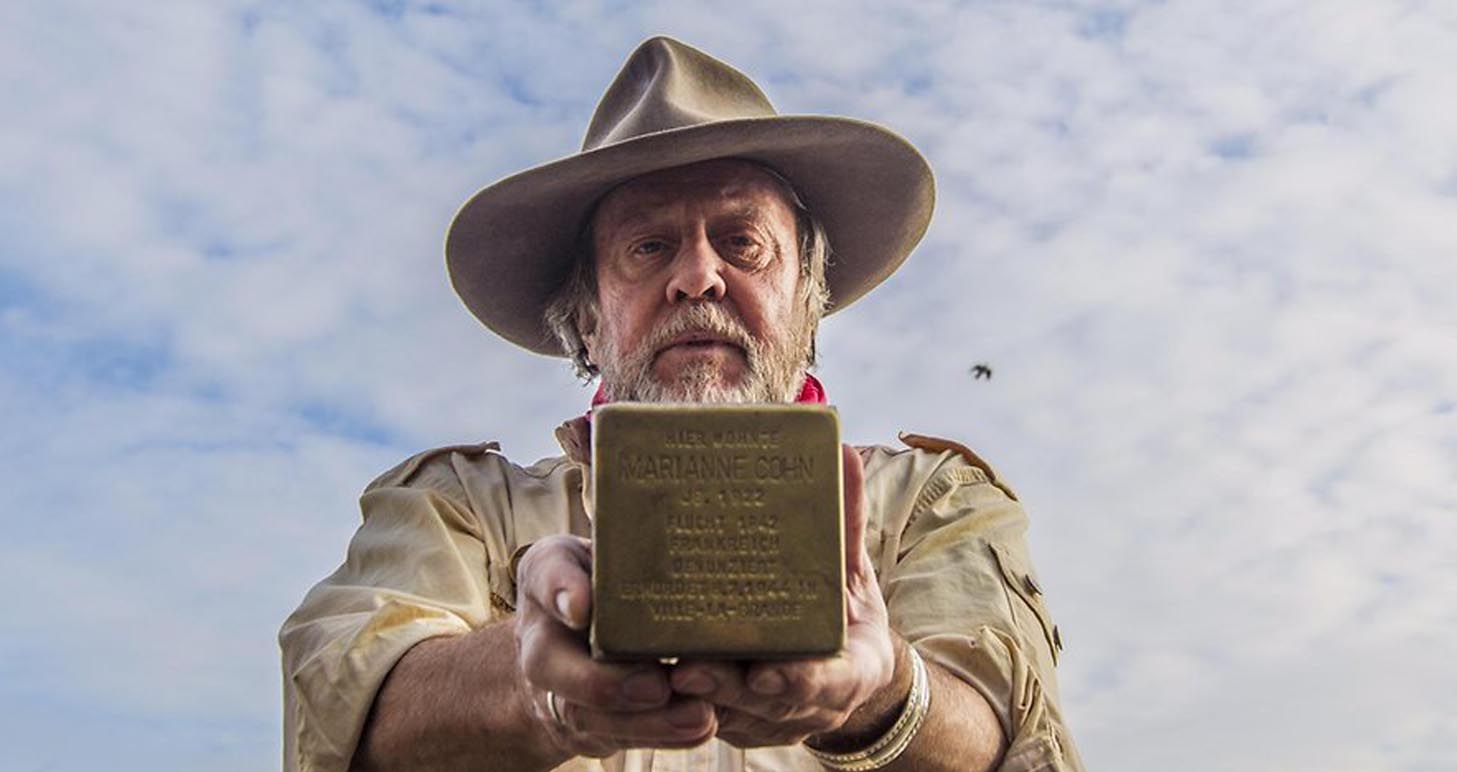
October 11, 2018
Individuals commemorate individuals:
Gunter Demnig, Stolpersteine and the advent of a democracy of remembrance in Germany
“Zachor! Capareth!”
“Remember! Atone!”
In one of the most breathtaking ironies of history, these commandments from the Torah are now the mottoes of Germany, the country that eight decades ago dedicated itself – with the utmost of ruthlessness and efficiency and with the greatest of success – to exterminating the Jews.
There are now more than 51,000 Stolpersteine – “stumbling blocks” – in 1000 cities in Germany. There are more than 7,600 in Berlin alone, 5,000 in Hamburg. Cologne has 2,000, Frankfurt 1,000.
There are now streets – such as Berlin’s Giesebrechtstrasse – in which every single victim of the Holocaust has a Stolperstein.
And Germany is one of 21 countries that have Stolpersteine, which are thus to be found everywhere from Oslo to Rome to Warsaw to Moscow – everywhere the Nazis killed people. The Stolpersteine constitute the world’s largest project of remembrance. As of this writing, there are 65,000 of them.
Those are big numbers and that’s an impressive statement.
Large though they are, they don’t begin to describe the impact of the Stolpersteine.
Which is this: each day, the people living in and visiting the 2,000 cities in Europe with Stolpersteine stumble across – are confronted with – the names and fates of the people living in these cities who were murdered by the Nazis and by their legions of very willing helpers.
And each of these stumblings across brings pangs of sorrow and compassion.
Each gives rise to the double-barrel awareness: it could well have been me. It could well be me, should civilization once more prove its fragility in the fact of barbarism.
And each of these stumblings across will take place in the years and the generations to come.
Through the Stolpersteine, each generation will learn of the horrible deeds of the Nazis, and of the victims of them.
!לעד
La ad!
Forever!
Now that’s what I call “never once forgetting”.
Now that’s what I call “atonement”.
Making this story of how German came to obey the prime commandments in the Torah even more riveting is how the Stolpersteine got started, and how they spread.
Stolpersteine 101
The golden square plaques glistening on the sidewalks of its cities and towns are visitors’ to Germany’s most unexpected and moving sight.
Each of these plaques bears the name of one of the 11 million victims of the Holocaust – be she or he a Jew, Gay or Lesbian, Sinti and Roma (the two main groups comprising the Gypsies), or someone murdered due to her or his afflictions (through “euthanasia” programs), political affiliations or religious beliefs.
The plaques are found in the sidewalks of front of the victims’ homes, the last places they lived prior to being herded into ghettos and sent off to concentration camps.
Each them bears the name of the person, her or his date of birth and the place and date of her or his murder. In some cases, such as that of the valiantly principled Jehovah’s Witnesses, the plaques include the reason for the killing.
In view of their Germany and Europe-wide dimensions and in view of their huge numbers, you might expect that the Stolpersteine were the products of a governmental program, of a nationwide coalition of groups of victims, or a commission comprised of experts on World War II and remembrance. Or of all three.
In fact, the Stolpersteine were the brainchild of a single person – a middle-aged, relatively unknown artist, albeit one with a track record of undertaking some of the most ambitious and physically punishing artistic feats in the world.
Who serendipitously stumbled upon his brainchild.
Gunter stumbles on to his life work
Gunter Demnig is very much a product of post-war Germany. He was born in 1947 in Berlin, in a time when his country – very successfully – was devoting itself to two things: rebuilding its economy and casting a smothering blanket of silence over its Nazi past.
This silence was all-pervasive in post-war German society. To preclude their children’s questions of “Papa, what did you do in the war?” “Mama, what did you see?”, their parents simply refrained from talking to them.
This speechlessness stood the killers and enablers comprising the bulk of this society in good stead, as it permitted them to pursue lives – in sadly nearly all cases – free from punishment for their acts of genocide and assent.
Gunter grew up determined to dispel this speechlessness and to achieve if not retribution for the perpetrators’ heinous acts, at least remembrance for its victims.
The method that he chose was art – concept art.
We are talking about big concepts here.
Involving Gunter undertaking physical feats that would put masochistic ultra-marathon runners and Iggy Pop to shame.
Such as walking on the highways connecting the central German city of Kassel and Paris.
800 kilometers, 21 days.
While pushing a rolling dispenser that Gunter had fashioned from scrap metal, so as to lay a trail – made out of paint – between the two cities.
This trail symbolized the ties now joining Germany and France – for so long, such embittered enemies – with each other.
Another remarkable display of intellectual aspiration and physical toiling:
to evoke the horrors of World War II, Gunter rolled his dispenser the 650 kilometers between Kassel and London, laying a “trail of blood” between the two cities in the process. BTW: he really used blood. It was from a a slaughterhouse.
Gunter didn’t stop there.
In a feat reminiscent of the most dedicated on the medieval scholars, Gunter tracked down the 1,200 peace treaties concluded (and subsequently broken) since 2,260 B.C. – the first treaty on record.
In a herculean marathon of inscribing, Gunter then stamped the names of these treaties on to a 12 meter long lead “scroll of peace”. It was put on exhibition throughout Europe.
These powerful works of art well-received.
But Gunter wasn’t quite satisfied with them.
He wanted to create something that would get to the heart of the matter.
The most important and devastating aspect of World War II: the suffering experienced by the victims of the Nazis.
In 1990, he chanced upon what has become his life’s work.
It started with Gunter’s laying of a trail – made out of chalk – tracing the deportation and killing of the Sinti and Roma who had lived in Cologne.
This trail-laying brought him into contact with residents living in the buildings once occupied by the victims.
“We’ve never heard of any Sinti or Roma living here,” was the residents’ standard response.
Gunter realized that this sentence applied to nearly all of the Nazis’ victims. Not only had the victims been murdered, the memory of their once having been residents – in good standing – of the neighborhoods comprising Europe’s cities had also been obliterated.
By the blanket of silence cast over the Shoah in Germany and over the many countries in which collaboration was the rule, not the exception.
Gunter decided to rip the silence to shreds, and to recall the victims from the oblivion of anonymity.
By creating a memorial – a plaque – for each and every one of the victims. His choice of materials fell upon brass, which is beautiful (Gunter is, after all, an artist) and very durable. And easy to work.
Gunter’s plan was to engrave by hand the names and fates of each of these victims on the plaques.
I told you that Gunter is the most physically ambitious of artists.
Gunter originally planned on placing these brass plaques on the walls of the buildings in which the victims had lived. This would make the memorials relatively safe and highly visible. The only problem with the plan: many of the buildings’ owners refused to accede to the idea.
Out of lack of an alternative, Gunter decide to locate the plaques on a place where the owners had no say in the matter.
On the sidewalks in front of these buildings.
Since these plaques would thus have to withstand the wear and tear of daily life and weather, Gunter designed them to last for La-ad – eternity. The plaques are embedded in weighty concrete cubes. These are wedged into the sidewalks.
Because the plaques are marginally above the plane of the sidewalks, Gunter christened them “Stolpersteine” – “stumbling blocks”. As Gunter likes to explain: “You don’t stumble physically over the Stolpersteine. You stumble upon them, and once you do, you stumble – with your heart and mind – upon their messages of suffering and remembrance.”
By 1994, Gunter had created 250 Stolpersteine for Sinti and Roma victims. These were exhibited in Cologne. A year later, and although already 48 years old, Gunter embarked upon his most prodigious feat of arts-driven athleticism.
It started with his laying a number of his Stolpersteine in sidewalks in Cologne – even though the city’s authorities had yet to approve them. A year later, he repeated his feat in Berlin.
In 1997, the Stolpersteine achieved a breakthrough. A little village in Austria authorized their placement in their sidewalks.
In 2000, with the securing of the approval by the municipal authorities in Cologne, Berlin and other cities, the main phase of the Stolpersteine began.
Sixteen years later, there are now more than 60,000 Stolpersteine. All of them have been fashioned by hand. Today’s “manufacturer” is Michael Friedrichs-Friedländer, an artist living in Berlin.
And a great majority of these 60,000 Stolpersteine have been laid in the ground by Gunter himself, who spends nearly every day of his life doing so. In up to three or four different cities a day.
This never-ending, ever-longer marathon of remembrance requires his driving – in a succession of beaten-up panel trucks – 60,000 kilometers a year throughout Europe.
It involves his kneeling on sidewalks in sun and rain, storm and wind.
It involves his wielding his heavy stone-cutting saw and rubber hammer.
It involves him working in dust and noise.
When doing so, Gunter, now 69 years old, is never alone. Quite the opposite. He is always surrounded by large crowds of people, many weeping, many cheering, many placing flowers upon the newly-laid Stolpersteine.
Who are these people?
They are the families of the victims, who have from the USA, UK, Australia, Israel and elsewhere to see their murdered parents, grandparents and aunts and uncles commemorated, to see penance being done for what happened to them.
They are the residents and owners of the buildings in which the victims once lived.
They are members of local and national Jewish, LGBT and other organizations, who have come to bear witness to what happened to their fellow members.
They are the members of the local Stolpersteine initiatives, of which there are now more than 1,600 in Europe. Nearly all of these people work on a voluntary, unpaid basis. Their job is to take the commissions placed for Stolpersteine.
Because each Stolperstein is ordered by a member of the above groups, none by an official body. Each order is thus an individual expression of commitment to commemoration.
After taking the orders, the initiatives’ next step to make sure that all of the victim’s descendants approve of the creation of the Stolperstein. Once this check has been completed, the initiatives place the order with Gunter’s office. Once Michael Friedrichs-Friedländer has created them, Gunter then comes to place the Stolpersteine in the sidewalk.
This is by no means the last act in this unique process of remembrance. Using their research and working closely with public sector archives and centers of political education, the initiatives often put out books chronicling in depth the life and times of the victims. This information is also available in many cities as apps or on-line resources.
Gunter’s 22 years of traveling and kneeling and hammering Stolpersteine into the ground have won him an incredibly long series of prestigious awards. They have been conferred by international Jewish groups, by human rights’ organizations, by the German government and by the EU. The Stolpersteine movement is supported by the world’s Jewish community – including, notably, the state of Israel and Yad Vashem – and by all national-level associations of Nazi victims.

March 23, 2018
Millions of people in South Sudan got some potentially good news this week. The country‘s parliament announced the staging of a hearing on one of the country‘s worst crises – the contamination of its ground water by greed-driven oil companies.
The hearing comes after the rendering of a tearful plea by South Sudan‘s minister of the environment at December 2017’s staging of the UN General Environment Assembly. The plea: “help us solve this grave and growing crisis“.
The hearing and the plea represent a stunning about-face by the government and the parliament of South Sudan, which had repeatedly and forcibly denied the existence of the crisis – and had persecuted journalists and victims daring to claim such.
The hearing represents the latest success in the campaign for clean water in South Sudan, which was launched by Sign of Hope in 2008. In September 2017, this heroic German NGO brought Terry Swartzberg, the Munich-based ethical campaigner, on board. His brief: to devise and implement a strategy of campaign development.
Entailed in this brief: the further development of the campaign’s infrastructure; the broadening and deepening the reporting from South Sudan and in the world’s media on the crisis; and the building up a network comprised of leading environmental and human rights organizations and platforms around the world and of stakeholders in South Sudan.
As the government’s actions show and as the recent spate of reports in the media indicate, this campaign has achieved the milestones established for it.
As Terry Swartzberg puts it:
“These accomplishments are heartening, and are the result of the close working relationship between the dedicated and capable people at Sign of Hope, Terry Swartzberg, and the worldwide network of activists which we work.
But we still have a long way to go to achieve our goals, which are ensuring that each of the 12 million South Sudanese, their livestock and farms have clean, easily-accessible water to drink and to use; that the millions of victims get the treatment and compensation that they so desperately need; and that the thousands of hot spots – places of oil contamination – get cleaned up,” concludes Terry Swartzberg.
For further information on Big Oil’s contamination of water, lives and politics in South Sudan:
http://ejatlas.org/conflict/oil-contamination-in-south-sudan
New commission for Swartzberg:
Joining the coalition to stop Big Oil’s poisoning of the water in Africa
April 3, 2017
Three hundred million people in Africa are going thirsty – or are drinking water that is making them sick – or even killing them – and deforming their offspring.
A broadly-based coalition has emerged to put an end to this unconscionable fact. One of the coalition’s main targets is Big Oil, whose spewing of oil and dumping of wastes is one of the main causes of this crisis, which is gripping such highly troubled countries as South Sudan.
A key part of this coalition is Sign of Hope. This Germany-based NGO was one of the first to provide solid proof of Big Oil’s misdeeds in South Sudan – and to try to build support to get the oil companies to cease and desist. While doing such, Sign of Hope has also been busy drilling wells, providing medical care and taking other actions to help the people of South Sudan.
Terry Swartzberg has been commissioned by Sign of Hope with a number of responsibilities in this area. They share a common objective: getting the world involved in the fight for clean water in Africa.
For further information:
Terry Swartzberg
swartzberg.com
https://www.hoffnungszeichen.de/english/news-desk

J
Swartzberg Climate Citizenship:
Reporting for the UNFCCC on the people fighting to save the climate
Munich, January 7, 2015
Now on-line at www.unfccc.int:”Voices from Lima to Paris”
http://newsroom.unfccc.int/lima/voices-from-lima-to-paris-christiana-figueres/
This series looks at the people who have put their hearts, souls and minds into the fight to save the climate – and thus humanity itself.
Commissioned by the Bonn-based United Nations Framework Convention on Climate Change, the series was written by Swartzberg Climate Citizenship and photographed by the Munich-based Hans-Jürgen Staudt. It features interviews with the people who attended the 20th Conference of the Parties (COP 20), which was held in Lima from December 1 – 14, 2014.
These people include Christiana Figueres, the tough-minded, warmhearted head of the UNFCCC and thus of the campaign to get an agreement in Paris in December 2015 that is capable of curtailing global warming.
Other persons profiled included crusading forestry experts from Bhutan, Peru and Kenya; negotiation-trackers from Bangladesh and Spain; and such well-known and respected figures in the world climate community as the World Bank’s Rachel Kyte.
This represents the second such commission from the UNFCCC for Swartzberg Climate Citizenship, which served in a similar role at COP 19 in Warsaw.
The UNFCCC has thus joined the EU Directorates General on the Environment and Technology, Germany’s Ministries of the Environment and Research and other institutions in forming Swartzberg CC’s portfolio of prestigious clients.
For further information
Terry Swartzberg
(+49-170) 473 35 72

